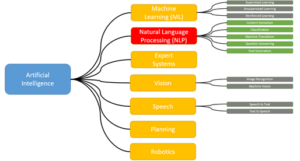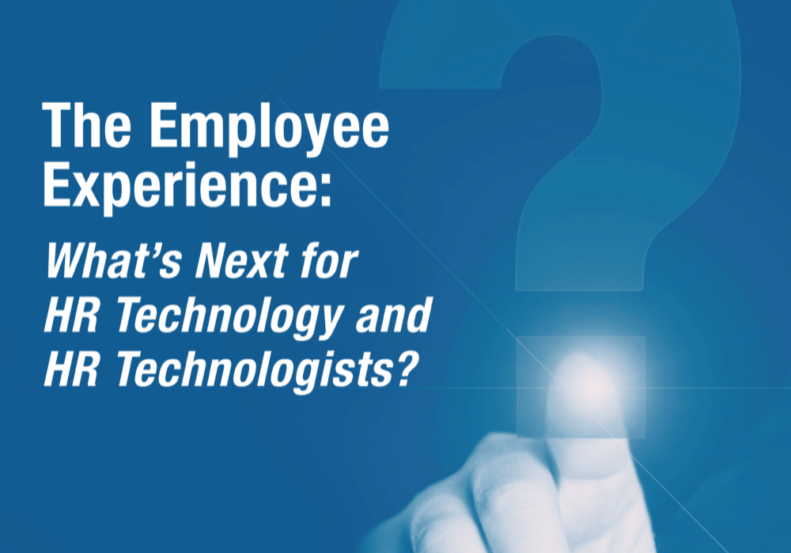Last year, COVID-19 pandemic showed the fragility of traditional industries. While some verticals like brick-and-mortar retail were challenged by the rise of a new digital consumer, others like the tech sector, have grown more than ever, with their stocks at the highest levels in their history, and their challenge was not finding customers, but finding the right talent for their high demand.
These days we are having an important gap between what we have and what we need, and HR leaders need to connect the dots, reduce the points of failure, automate, centralize the data, empower people to foster genuine digital adoption and engagement. So, we need to set up processes to help senior leaders to make sense out of their data in this complex time. And AI is here to help.
With the growing volume of data, companies have the opportunity to leverage investments to augment the existing decision making with data-driven insights faster than ever with AI.
Probably the most popular subfield of AI is Machine Learning, and gives computers the ability to learn from data, without explicitly being programmed, but there are several areas where AI can be applied beyond ML, like Natural Language Processing (making sense of written or spoken text and perform tasks like content extraction, topic classification, translation, and more), Expert systems (making decisions in real-life situations), Computer Vision (recognizing objects), Speech recognition (conversational and transcribing speech to text and text to speech), Planning and Optimizing systems and Robotics or Cobots (which see, hear and react using sensors, like humans).

Finding the right talent
In the candidate selection process, it is a challenge to browse between hundreds of resumes manually to find the best fit for a role. If we analyze the recruitment process, artificial intelligence shortens and enhance the cycle that takes weeks to hire the right talent. According to SHRM1, the average time-to-hire is 36 days, and can be up to 8 weeks, depending on the industry. If we rely on Natural Language Processing (NLP), the hiring cycle can take two to three weeks because you are not looking at every resume and cover letter. An AI model has already done everything for you, so your role is to do a final check, and eventually interview the best candidates. Natural Language Processing is based on Deep Learning, a sophisticated enhancement of Machine Learning, that uses neural networks, mimicking the human brain, to process the different calculations to understand human language and reply accordingly. NLP makes associations between linguistic expressions, actions, and environments.
These models can handle vast amount of data and weight each link in the semantic network and linguistic descriptions to make it accurate. When they work with recruiting processes, they acquire representations of words and sentences, focusing on key words and descriptions of the meaning of some phrases, to allow understanding whether we have a match, even with unknown words and actions that are not included in the training datasets.
HR Analytics and Intelligent Talent Acquisition have emerged as a key area of competitive advantage for any organization. The evolution of deep learning, has been enabled by the computer power we have today and the exponential growth of the data that we can capture, ingest, store and consume in our models. Today the cost of storing data and processing time is very low and any company can afford leveraging their operations with this technology.
Relying on AI, recruiting process can be enhanced in two ways, first automating the high volume, high repetition tasks and second identifying and ranking the best matches between resumes and roles. In the first case, traditional “manual” work like posting job descriptions, opening emails, downloading resumes to a particular folder based on the candidate profile and JD, download the cover letter to another folder, take information from different sources, copy-paste data, transform, clean, filter and finally upload the data to another shared drive. This can be easily done with a model that mimics the rules followed by an analyst (like an Excel macro). For the second part we can use cognitive AI, supported by NLP, to read the natural language in job descriptions and candidate profiles, find a match or even predict a good fit for similar or future searches. NLP models allow details metrics and percentages on how well each candidate “fits” for the role and company culture, and use historical data of hires, matching candidates and roles and training the models with interview decisions, plus external data we can use to improve the accuracy.
The beauty of these models is that they raise the bar very high, creating a data culture across the company, no just finding a right match between candidates and roles, but also increasing productivity with AI recommendations like what is best role for a particular employee, what their next position should be or whether we can cover an open position with an internal candidate.
One of the reasons why traditional industries are declining is because (we) the consumers have evolved. We don’t want lines; we don’t want to waste our time. And we are spoiled by the tech industry. We want to have the same experience we have with Amazon, Spotify and Netflix with every process we interact with. We want proactive help and recommendations, and have every transaction done in a short time, seconds ideally. For that, we need processes in place that rely on data and AI to make our people having the same experience they have with these platforms, and improve productivity, efficiency, and bring savings at the same time.
Intelligent recruiting
Imagine a perfect world where a recruiter can open a platform, enter the job description and have the best candidates in seconds, recommending similar candidates, having a ranking, understanding when they could be in the short and long run, predict the ROI, know when and how to engage with every candidate and even connect supply and demand (talent and hiring managers) without middlemen like Uber. The good news is that this exists now, the technology is available, and it is not expensive. Bad news is there are no free lunch here, we don’t have plug and play models for this and takes a lot of work. It is worthwhile working on it to have a best-in-class operation, transform the candidate experience, create new da igital operation and unleash the power of our data.

AI can free up recruiters to do strategic work and avoid a manual repetitive and sometimes subjective operative labor, supporting them with actions like candidate interaction, communication, and engagement, perform sentiment analysis to understand career goals of employees, identify passive candidates and create a talent pool, match resumes with current and future goals beyond the job posts, assess candidates to understand their values, personality and leadership style, scheduling and perform the first round of interviews. These models can also identify internal candidates and help HR leaders understanding which can be a good fit for a position and recommend employees which role or new posting would be a match for their career goals, just like the “dating” apps work. Using technology can be a very good solution to filter the vast number of applications and have an accurate selection of the candidates that match with a particular role, and only submit the best candidates to the hiring managers.
Be social
Companies are understanding how important social platforms to everyone are. We are social beings and COVID-19 pandemic exacerbated that even more. According to Statista2, Facebook is the biggest social network worldwide with over 2.7 billion monthly active users as of the second quarter of 2020. Socializing is important for employees, especially when they are working remotely, and probably isolated. Creating internal platforms helps companies collecting impressive insights about their employees. Surveys, polls, Q&As, communications, and career expectations.

This can democratize access to information across the company and at the same time, have an invaluable source of insights to understand and measure the climate, create communities, and capture passive and active job seekers indoors.
The most interesting part is that we have the technology ready to support our processes, but we need a hard work on culture and change management to have everyone onboard.
Should we?
On the downside, these models can be impacted the most carrying historical bias that company usually have. If they are trained with data that is already biased, with an implicit discrimination, and unfairness, they will detect and follow the same patterns in a digitized, automated way, for example downweighing resumes of women or minorities that were not hired in the past. It can hire homogeneous types of profiles, avoiding diversity and inclusion and hence, innovation
On the other hand, this can be fixed with different rules, like for example balancing datasets in order to have more groups represented. There is a shortage in quality trained data, that needs cleaning and filtering. There are also implementation challenges like lack of collaboration or business alignment, education, upskilling and reskilling, and these programs need to come with an extra change management and cultural work behind to avoid errors or biases and miss good candidates. Even though AI models are very good at “reading” humans, emotional intelligence is key for any human interaction, and human workers need to be involved in the recruiting process. Empathy and relationships building are two of the most important qualities of the humans, and we want the employee experience to be the best since the very first minute they join our company.
In the past it was fair to compare the abilities of a single human with a bot or AI. Today, we can think of a group of smart entities interconnected with a collective intelligence, getting data from many databases, using stats to understand what the best fit is now and in the future. The post-Covid involves empathy and adaptability. We are living a hybrid world now, with some companies that have born digital, even though they are operating in hybrid world, but digital is the new normal.
1. SHRM. TALENT ACQUISITION BENCHMARKING. https://www.shrm.org/ResourcesAndTools/business-solutions/Documents/Talent-Acquisition-Report-All-Industries-All-FTEs.pdf
2. Statista. Number of monthly active Facebook users worldwide as of 4th quarter 2020. https://www.statista.com/statistics/264810/number-of-monthly-active-facebook-users-worldwide/#:~:text=With%20over%202.7%20billion%20monthly,network%20ever%20to%20do%20so



